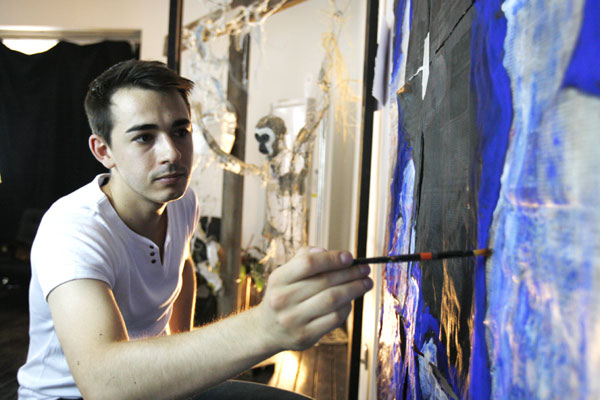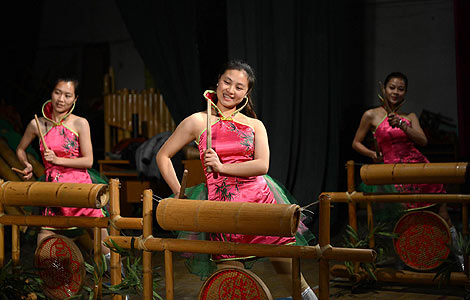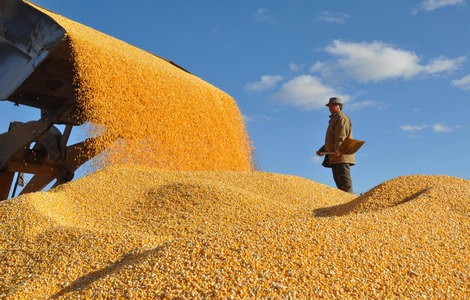
 |
|
Penot is one of many Western artists being attracted by a changing China and its people. Zhu Xingxin / China Daily |
When Jean-Charles Penot arrived in Beijing two years ago, he headed straight for Beihai Park, where a famous imperial Nine-dragon Wall stands. Penot stood before the wall for days on end, observing the dragon relief for a whole year. "I took my time to study the dragons because I did not want people to laugh at my paintings if they did not show the Chinese dragon properly," the French artist says.
"In China you can find the dragon everywhere: on the roof, in the park or at the temple. It is a very important symbol of China in my eyes, but you can also notice that Chinese people seem to pay less attention to it in modern times, which I think is a pity," Penot says. "This year is the Chinese Year of the Dragon, and I think it would be very meaningful to make a series on this totem of the Chinese people."
The 26-year-old's efforts culminated in a recent exhibition, his first in China, in Tianjin. His work, which he took six months to complete, was presented in a series of nine grand paintings offering different takes on the mythical beast, placed in a hall where water, trees and grass came together to help bring his works alive.
His dragons are portrayed in different settings including the seasons as well as the seminal moments in the broad expanse of Chinese history and culture.
"In winter the color of the dragon is silver, as the weather is cold and everything is frozen, but in spring the color is shining and gorgeous, in celebration (of) the Chinese New Year," Penot says.
The Frenchman is just the latest of many artists from the West attracted by the changing face of China and its people as they grapple with rapid economic development against a rich cultural legacy.
Penot's own interest in China was aroused when he was 6, when he spent time in his grandfather's library. He found a book introducing China through different aspects such as Chinese calligraphy, cultural symbols and painting.
"Chinese culture is so different from France, I knew I had to visit this country one day," Penot says.
Influenced by his grandfather's interest in painting, Penot started to draw at an early age, developing a passion and dogged determination to capture the essence of his subjects that he was to show later.
Two of his teachers, the French artist Alexis Strelitz and the Danish artist Steen Halbro, helped improve his techniques and at the age of 24, he presented his first exhibition in Paris to high acclaim.
Themed "Innocence", Penot's show featured different faces of children living in rural Thailand.
"In appearance, these children seem what they are - kids, but from their eyes, you can observe that they have already had the look of an adult," Penot says.
Penot made China his next stop in 2010.
Following his work on Chinese dragons, he is now moving into sculpture - this time with inspiration from the old Chinese markets.
"I am using materials collected from the Qilihe market, a traditional Chinese market in Beijing. People throw these things away but for me, they have a history and I'd like to present my work with things that have a past.
"My inspiration also comes from Chinese calligraphy; the paper people use for calligraphy is quite thin, and similarly I am trying to experiment with paper in my work."
Apart from using newspapers, old posters, plastic bags and wire, Penot is experimenting with Chinese ink, soy sauce and wax in his works.
"I'm being inspired almost every day," he says, "because the environment is so different."
Before coming to China, Penot worked as a designer for Club Med, the French group of vacation resorts. But he quit his job in 2009 to concentrate on his art.
"In China, I have more space to develop my career," he says. "Chinese people actually seem to respect artists more than French people do now. The galleries in China are also big, which can help provide the space required for my work."
liaoxue@chinadaily.com.cn







